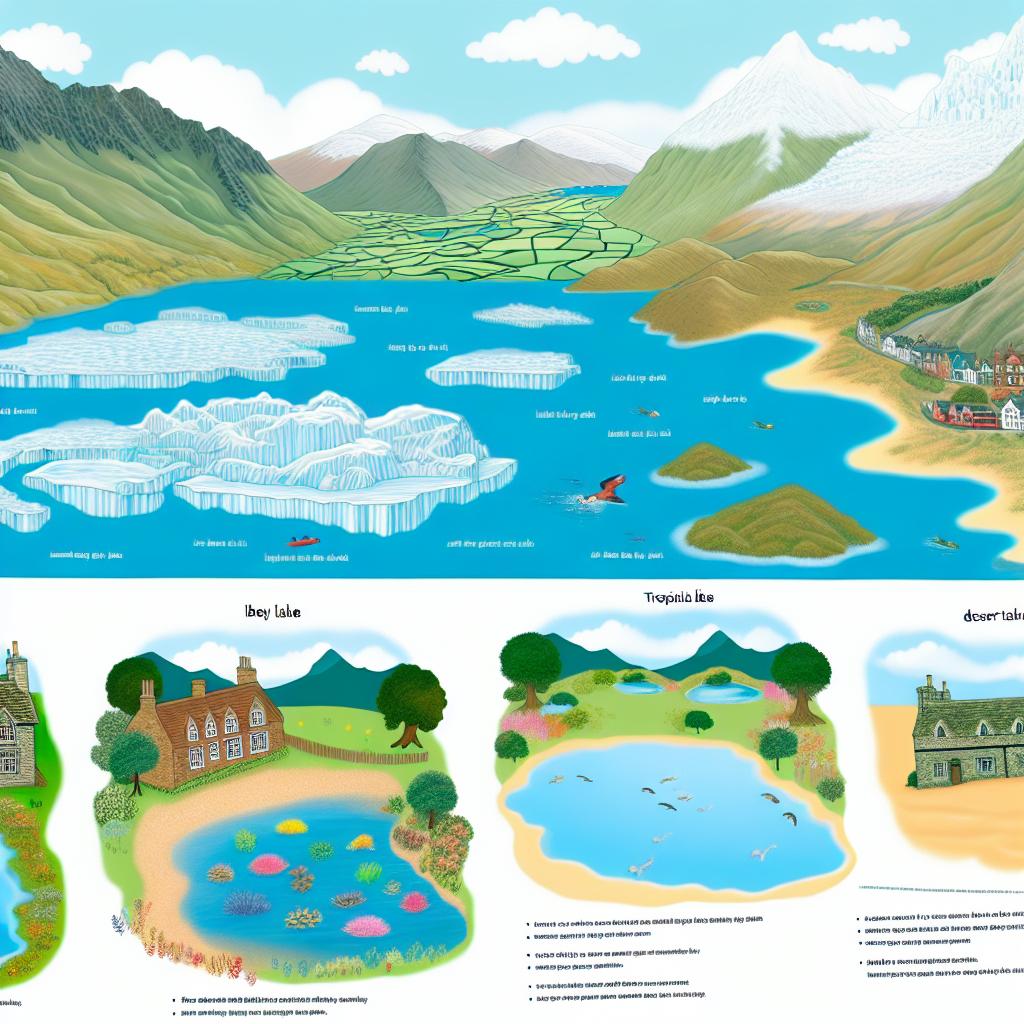Introduction
The United Kingdom is home to a variety of lakes, but when compared to other global lakes, they present both unique features and limitations. This article explores how UK lakes stand in contrast to some of the most renowned lakes around the world, considering factors such as size, depth, and biodiversity.
Lake Size and Depth
The UK boasts numerous lakes, known locally as lochs in Scotland, yet they are generally much smaller and shallower than those found worldwide. For instance, Loch Ness is perhaps the most famous UK lake, with a surface area of approximately 56 square kilometers and a maximum depth of about 230 meters. While significant by British standards, it pales in comparison to Lake Baikal in Russia, which covers 31,500 square kilometers and reaches depths of over 1,600 meters. Similarly, Lake Superior in North America, the largest freshwater lake by surface area globally, spans around 82,100 square kilometers, dwarfing any lake found in the UK.
UK lakes, therefore, offer a more modest scale in terms of their physical dimensions. This does not detract from their beauty or significance, but it does place them in a distinct category when contrasted with other global lakes. The geological formation, climate, and historical factors all play a role in defining these characteristics. The UK’s temperate climate and its glacial history have resulted in a landscape that is both diverse and tame, with lakes that often reflect these traits.
The depth factor is another crucial element in understanding the nature of UK lakes. While Loch Ness is relatively deep by national standards, global lakes like Lake Baikal and Lake Superior offer a completely different experience. Their greater depths contribute to unique environmental conditions, such as colder waters and different types of aquatic life that can thrive within them.
Biodiversity and Ecosystems
UK lakes generally harbor a less diverse ecosystem compared to some of their global counterparts, due to climatic and geographical differences. The cooler, temperate climate of the UK supports species like brown trout, perch, and pike, but lacks the tropical biodiversity seen elsewhere.
In the warmer regions, like those around African lakes such as Lake Victoria, the spectrum of aquatic life is much broader. The warm climate and abundant habitats allow for the flourishing of species such as the Nile perch and diverse cichlid fish varieties. Such biodiversity is a marker of ecological richness that results from the complex interplay of temperature, habitat diversity, and ecological stability.
This reduced biodiversity in UK lakes, however, can sometimes be beneficial, minimizing ecosystem complexity and potential ecological volatility. The native species in the UK have adapted over millennia to the stable, albeit less varied, environmental conditions. This has implications for conservation, where the focus often centers on preserving the few endemic species and maintaining the ecological balance against invasive species and other human-induced changes.
Human Impact and Usage
Lakes in the UK and worldwide face challenges from human activity. However, the scale and nature of these impacts can vary significantly. UK lakes often experience pressures from agricultural runoff and tourism, leading to issues like eutrophication and habitat disturbance.
This anthropogenic influence results from the dense population and intensive agricultural practices prevalent in parts of the United Kingdom. Efforts to manage this impact are ongoing, with measures like buffer zones for agriculture and controlled tourism initiatives aimed at preserving the natural beauty and ecological stability of these water bodies.
Contrastingly, Lake Tanganyika in Africa faces threats from overfishing and industrial pollution, illustrating how human activities impact lakes differently across the globe. The challenge at Tanganyika, a critical resource for local communities and biodiversity, highlights the global necessity for sustainable practices.
Recreation and Tourism
Recreational activities and tourism play crucial roles in both the UK and globally, but the experiences differ due to each lake’s characteristics. For instance, the Lake District in England offers picturesque landscapes ideal for hiking and boating.
The unique topography and serene environment contribute to the Lake District’s status as a popular tourist destination, with its appeal lying in scenic routes, short hikes, and cultural heritage linked to famous poets and historical figures.
In comparison, the Great Lakes in North America provide opportunities for more extensive water sports and activities like sailing and scuba diving, given their larger size and greater depth. These lakes, being vast and diverse, allow for a broad range of activities that cater to different interests, from professional diving to competitive sailing.
Both regions benefit significantly from tourism’s economic input, but they must manage the environmental footprint that accompanies increased human presence. Effective management ensures that recreational use does not compromise ecological integrity or diminish the lakes’ natural appeal.
Conclusion
While UK lakes like Loch Ness and Windermere hold cultural and historical significance, they are magnificent in their own right. However, when viewed on a global scale, they are overshadowed by the size, depth, and biodiversity of other well-known lakes. The juxtaposition of these lakes with larger and more ecologically complex ones highlights the diversity of freshwater resources globally.
The cultural attachment and historical allure of UK lakes offer an insightful lens through which to view these natural features. They symbolize the UK’s natural heritage and continue to inspire millions through their landscapes and the stories woven around them.
For further enrichment on the worldwide comparison of lakes, their sizes, and their other fascinating aspects, you can visit this detailed list to explore more about different lakes.
